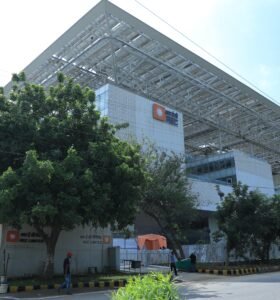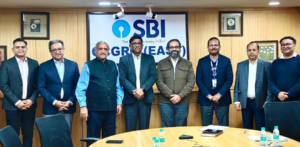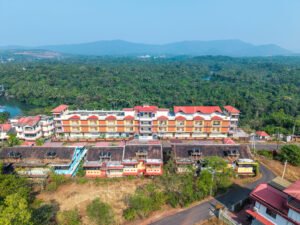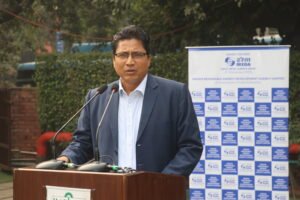Optics and Outposts
Five years after the deadly military standoff between India and China along the Line of Actual Control (LAC), a new chapter in the uneasy relationship between the two Asian giants may be opening — at least in the diplomatic arena. From 13 to 15 July 2025, India’s External Affairs Minister Dr. S. Jaishankar visited Singapore and the People’s Republic of China, where he held high-level talks in Beijing with President Xi Jinping, Foreign Minister Wang Yi and Liu Jianchao, the powerful head of the International Department of the Chinese Communist Party.
These were not merely sideline meetings at the Shanghai Cooperation Organisation (SCO) Foreign Ministers’ summit — they were deliberate and direct political engagements aimed at stabilizing a relationship badly frayed since the 2020 Galwan Valley clash. Jaishankar described the meetings as constructive, reaffirming India’s willingness to manage differences through dialogue and mutual sensitivity. He characterized the current phase as moving “beyond a thaw,” suggesting cautious optimism about the trajectory. The Chinese leadership, too, expressed its intent to restore trust and improve bilateral relations.
But while the language of diplomacy in Beijing spoke of restraint and resolution, satellite imagery told another story over the high-altitude frontier in eastern Ladakh. Recent findings from multiple Open-Source Intelligence (OSINT) platforms have revealed continued and extensive Chinese military infrastructure development near Pangong Lake — a sector that was among the most volatile during the 2020–21 standoff.
OSINT Revelations: Pangong Still in Play
According to detailed OSINT analysis of July 2025 imagery, the People’s Liberation Army (PLA) has:
- Completed a second bridge across Pangong Tso, dramatically shortening the PLA’s logistical loop between the lake’s northern and southern banks.
- Developed a new permanent settlement with over 100 buildings, likely dual-use, near the Finger 4–8 area — complete with bunkers, shelters and support infrastructure.
- These moves effectively allow China to enhance troop movement and logistical support in the contested zone — giving it greater tactical advantage and reducing India’s reaction time in the event of future hostilities.
The Diplomatic Dissonance
The OSINT findings present a stark contrast to the diplomatic optimism emanating from Beijing. Since 2020, India and China have conducted 19 rounds of Corps Commander-level talks, achieving partial disengagement in Galwan, Pangong and Gogra, but with key flashpoints like Depsang and Demchok still unresolved.
Now, with Jaishankar’s first visit to China in five years and top-level engagement with Xi Jinping himself, the hope was for a credible roadmap toward peace. Yet China’s silent but steady infrastructure expansion appears to be altering facts on the ground, even as it engages India at the negotiating table.
This twin-track strategy — diplomacy at the top, deployment below — has long been part of China’s border playbook. The danger lies not just in the structures being built, but in the strategic signals they send.
Strategic Implications for India
- Questioning Credibility: If ground activity continues to outpace negotiated agreements, India risks entering talks with diminishing strategic trust. The image of sincerity must be backed by observable restraint.
- Tactical Imbalance: Bridges and settlements are not symbolic. They improve PLA readiness, troop rotation and supply efficiency — making it harder for Indian forces to hold parity, especially in winter months.
- Advantage China: India, with 225,000 troops along the LAC compared to China’s 90,000–120,000, faces logistical constraints due to the region’s terrain. India has countered with its own infrastructure, completing over 100 Border Roads Organisation projects in 2021 and strengthening the 17 Mountain Strike Corps. However, sustained investment in surveillance and rapid-response systems is critical to match China’s advancements.
- Evolving Ground Realities: Without visible resistance, these constructions risk changing the status quo ante — pushing India to accept a new normal over time.
India’s Response: Balanced and Firm
- Keep Talking, Keep Watching: India must remain diplomatically engaged — but with firm insistence on verifiable disengagement, not vague assurances.
- Leverage OSINT for Transparency: Publicising satellite-backed developments helps India counter deniability and engage international opinion without sounding alarmist.
- Economic Statecraft: Maintain calibrated trade restrictions in strategic sectors.
- Strengthen Border Infrastructure: India should continue to invest in roads, airstrips and logistics in Ladakh and Arunachal, ensuring tactical symmetry.
- Quiet Signalling in Multilateral Forums: India can subtly raise concerns in forums like SCO, BRICS. QUAD and G20, highlighting the discrepancy between Beijing’s words and its actions.
Between the Lines — and the Lakes
Dr. Jaishankar’s outreach to China was a necessary and deliberate step toward easing tensions. But peace cannot rest on protocol alone — especially when bridges and bunkers are being quietly erected on contested terrain.
The contrast between the constructive language in Beijing and the construction activities in Ladakh is not just a diplomatic dilemma; it’s a strategic warning. India must now manage both tracks simultaneously: maintaining engagement without illusion and preparing for peace without neglecting preparedness.
In the Himalayas, where trust erodes faster than ice, diplomacy must be guided by realism, not rhetoric.
About The Author
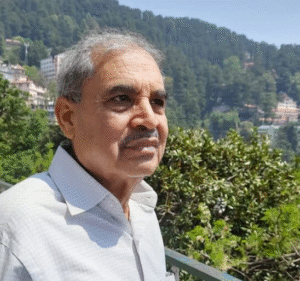
Mr. Hridaya Mohan (hridayamohan@yahoo.co.in) is a regular Columnist with a renowned Indian daily “The Hitavada”, “Bharat Neeti Media” and some other newspapers / magazines internationally. He lived and worked in Beijing for 6 long years as Chief Representative (China & Mongolia), SAIL. Recipient of “Sir M Visvesvaraya Gold Medal”for one of his papers, “Benchmarking of Maintenance Practices in Steel Industry” from The Institution of Engineers (India), he was awarded with “Scroll of Honour” for the excellent contributions to Engineering fraternity from IE(I), Bhilai, “Jawahar Award” for leadership excellence in SAIL and “Supply Chain Leader – 2017” award from IIMM.



